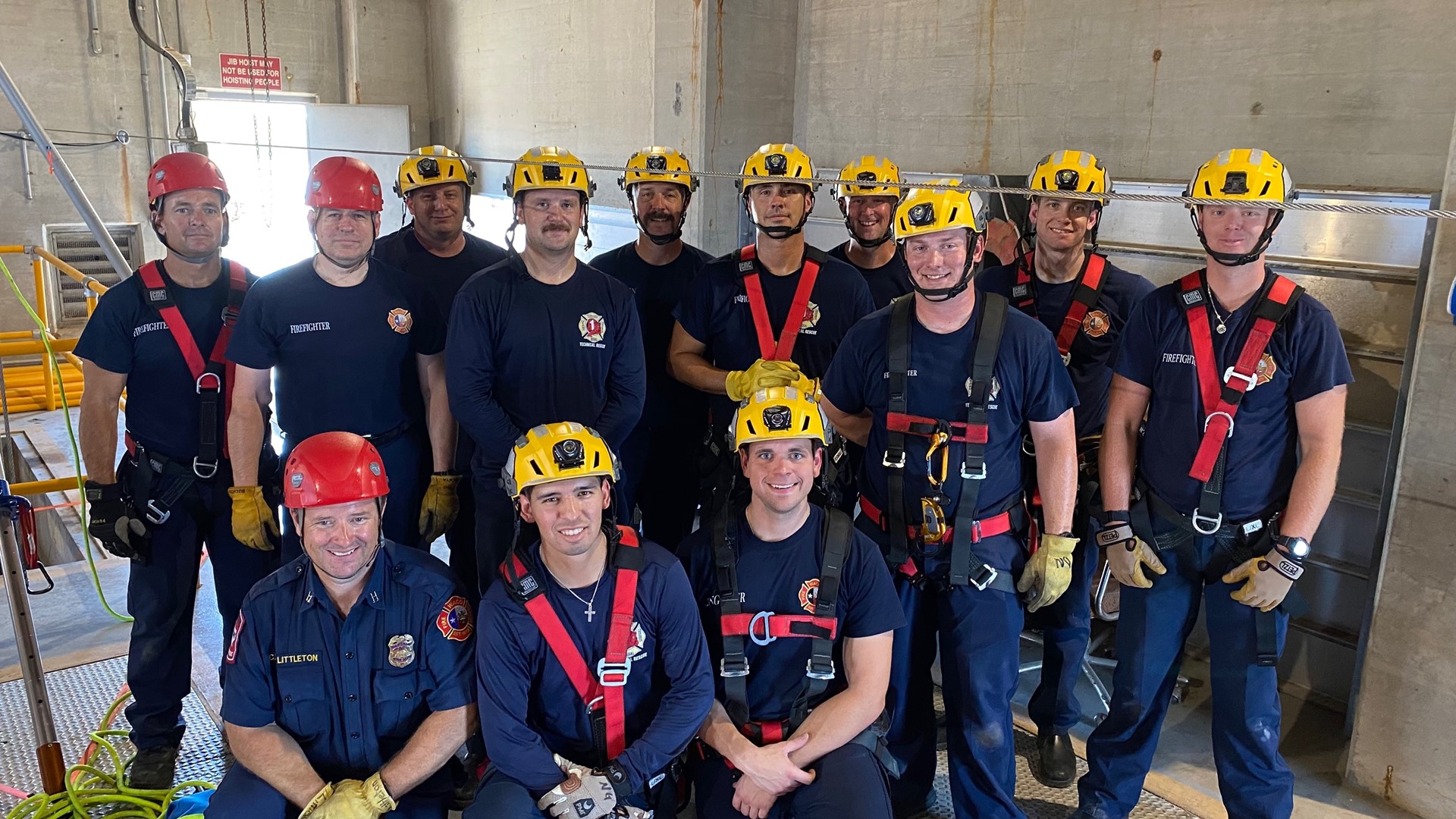WACO, Texas — You may think of firefighters as the first responders who are associated with putting out fires, showing up to crashes and your occasional cat rescues from trees. However, there is a group that takes on extra training and credentials to be able to expand their services.
It's called the Technical Rescue Team and it's made up of designated rescue specialists that are able to assist in unique and unusual operations.
The Waco Fire Department has many members with the credentials to help if there is a situation needing a technical rescue. The department also has designated individuals who are always on the Technical Rescue Team that operate out of Station One.
Waco Fire's Technical Rescue Team are capable of responding to structural and trench collapses, and also swiftwater, confined spaces and rope rescues.
Every year the team brushes up on their skills, knowledge and equipment with drills so they can remain proficient for when there is an emergency.
6 News got to attend one day of this year's annual confined space drill which was held at the intake tower on Waco Lake thanks to a partnership with the U.S. Army Corps of Engineers.
Over three days of training, Waco Fire members got to run through simulated drills inside the intake tower.
"This is important because it's our job to provide not only this service, but to stay up to date on our on our skills," said Engineer Dylan Karl who is on the Technical Rescue Team. "That way we're proficient in safety for not only our rescuers but for the victims that were going into rescue as well."
Firefighters practiced lowering one of their own into a confined space to make a rescue. The rescuer would then have to secure the victim, which is a training mannequin and bring them back to safety.
On Wednesday, the group training also had a chance to practice on newer equipment to make the simulated rescue. Karl says the piece of technology, the Arizona Vortex, opens up more opportunities when they're helping a crisis.
"This system has multiple features," he explained. "You can set it up in different configurations as far as height goes in the legs. You can set up different anchor systems with it. You can set it up on a cliff face or edge of the building and be able to repel down and rescue someone. So, it's got many features that we can utilize it with."
They're playing out real-life situations so they can save lives.
Karl recalls Waco Fire's Technical Rescue Team helping with silo rescues, like the one in Clifton. He says being supportive of one another and also making the rescue of someone in a dangerous situation is why he enjoys being part of the Technical Rescue Team.
"Being a firefighter is something that I've always wanted to do," he said. "It's been in my family -- I'm second generation in the fire service so I've always really loved the job and loved what it was about and the brotherhood. I liked the technical rescue side of it. It adds an additional factor to being able to do what we do and then I enjoy the problem solving that comes about with that."
Waco Fire's Technical Rescue Team responds to an average of 30 to 40 calls a year. It is a regional response team so they serve the City of Waco but also those in the Heart of Texas Council of Governments (HOTCOG) region - McLennan, Bosque, Hill, Falls, Freestone and Limestone counties.
"If something happens not just inside of McLennan County, and one of the other six HOTCOG regions, we do provide a service to them and we will respond," Karl added.
HOTCOG is an area larger than the states of Rhode Island, Delaware and Connecticut combined, or 5,645 sq. miles.
Waco Fire's Technical Rescue Team is a group of specialists. Always ready to respond no matter the call and when you need them most.
"Call for help, call for the people that are that have trained to complete that rescue and so we can provide that service so you don't get yourself in a worse situation," Karl said.

